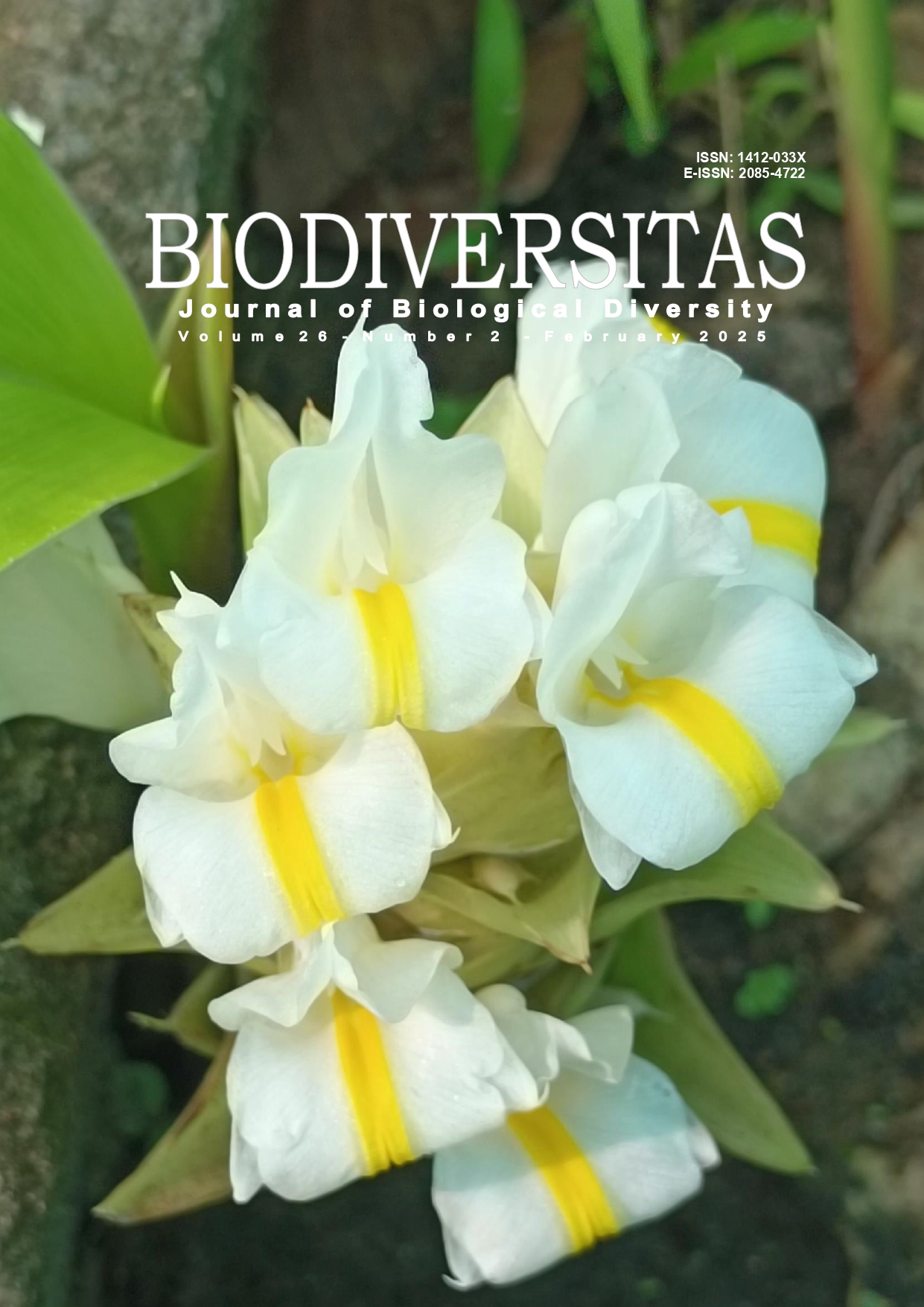Investigation of endophytic bacteria associated with Paederia foetida: Population, characterization, antibacterial, and pathogenicity analysis
##plugins.themes.bootstrap3.article.main##
Abstract
Abstract. Yunita M, Ohiwal M, Warella JC, Azizah SN, Asmin E, Siahaya PG. 2025. Investigation of endophytic bacteria associated with Paederia foetida: Population, characterization, antibacterial, and pathogenicity analysis 26: 981-991. The aim of this study was to obtain non-pathogenic endophytic bacterial isolates that can be developed as antibacterials for further applications. Endophyte isolation was carried out in 4 different media to obtain diverse endophytes and characterized macroscopically and microscopically. Endophyte screening was done through antibacterial tests against 10 different pathogenic bacteria. Pathogenicity analysis was performed on Blood Agar Plate (BAP) to differentiate pathogenic and non-pathogenic group of endophytic bacteria. The results showed that Starch Casein Agar was the best media for isolation in terms of total population and morphological characteristics compared to the other three media. A total of 27 isolates were collected according to the different morphology. Screening through antibacterial tests revealed that 19 endophytic isolates were significantly able to inhibit various species of pathogenic bacteria (p-value of 0.001). Pathogenicity analysis showed that 8 of 19 isolates (HR1, HR2, HR3, K2, NL3, S2, A2, and A9) were categorized as ? hemolysis, while the other 11 isolates were categorized as ? hemolysis and ? hemolysis. The study concluded that 8 endophytic bacterial isolates associated with P. foetida leaves had the strong potential to be developed and can be applied in advanced antibacterial applications.

